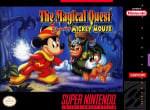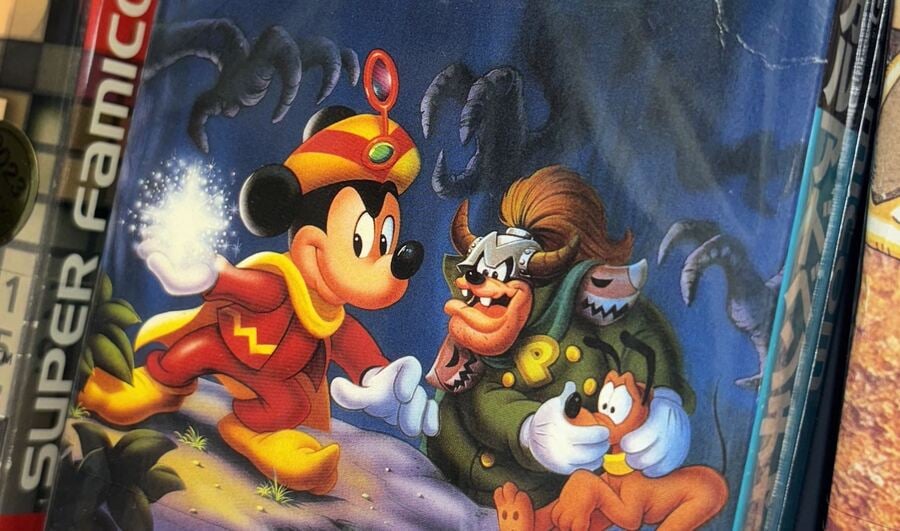
Don't worry – you're not suffering from déjà vu. If you feel like you've read this before, it's because we're republishing some of our favourite features from the past year as part of our Best of 2024 celebrations. If this is new to you, then enjoy reading it for the first time! This piece was originally published on October 22nd, 2024.
The Magical Quest Starring Mickey Mouse has always been one of our favourite platformers for the SNES, with its creative costume-based gameplay and spectacular soundtrack from the Mega Man 5 composer Mari Yamaguchi. So, we've always been interested in the prospect of uncovering a bit more about the history of its development.
Over the years, we've done our utmost to track down members of the game's development team and dig up anything we can from old magazines, but ultimately we've never been able to make much progress, thanks to a couple of frustrating roadblocks. The first is that pretty much everyone who contributed to the project at Capcom never officially commented on their collaboration with Disney, and the second is that the majority of those individuals are either still under contract at Capcom or have long since vanished from the industry, making it almost impossible to contact them now.
Luckily, though, we were recently able to find a way around these obstacles, getting in touch with a small group of people who were working at Disney and Capcom in the early '90s on the US side, who have some intimate knowledge of the project and the relationship between the two companies. This includes the vice president and general manager of Disney Software at the time Shelley Miles; the Disney producer assigned to the project, Noah Dudley; and the Capcom USA senior vice president Joe Morici.
Miles and Morici were responsible for signing the first publishing agreement between Disney and Capcom in the mid-80s and were still at the company during the release of The Magical Quest Starring Mickey Mouse several years later. Dudley, meanwhile, kept in close contact with the development team in Japan and was tasked with being the House of Mouse's representative on the project. Because of this, they were able to offer us an interesting insight into the making of the game, which you can read more about below. Before we get started, though, it's probably best that we first take a little journey back in time to look at the history of Disney in games and the creation of the company's own video game unit: Disney Computer Software Ltd. (later shortened to Disney Software).
The Birth Of Disney Software
Prior to the creation of Disney Computer Software in 1988, the company had already been licensing several of its characters and films for computer games for close to a decade. The company, for instance, had already partnered with Atari, Nintendo, Sierra On-Line, Midway Games, Epoch, Hudson Soft, and Gremlin Interactive. However, what it had yet to do was establish a proper entity inside the company to oversee its own video game output at its Burbank headquarters, with previous games either falling under Disney's educational division or being produced elsewhere without much supervision.
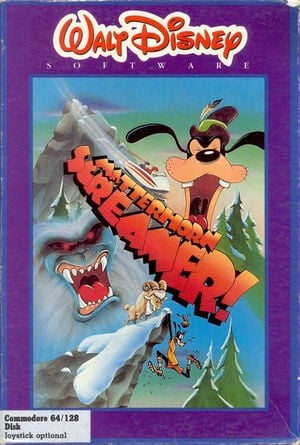
That all began to change, however, between 1987 and 1988, when the consumer products division hired its first in-house producers David Mullich and Cathy Gamboz, and started taking a more active role in the development of games like Matterhorn Screamer and The Chase on Tom Sawyer's Island.
Shelley Miles, then vice president and general manager of Disney Music, remembers, "Disney had an educational division and the software was really part of the educational division. And around that time, they decided to try to turn it away from pure education and make it fun and kind of a little more mainstream."
As part of this shift inside the company, the consumer products division began to pay more attention to gaming, deciding in 1988 that it wanted to create a video game tie-in to the film Who Framed Roger Rabbit for home computers to capitalize on the upcoming movie, starring Bob Hoskins and Christopher Lloyd. The only problem was it couldn't find a publisher to pick up the license, meaning they had no way to distribute the game.
"They had this movie coming out," recalls Miles. "It was going to be a big deal. The guys in consumer products really really wanted to have a game to go with it. They tried to license it because that was the typical Disney model: to license things out. But because of how secretive the script was and the short timeline, they didn't get any takers. So they came to us at Disney Records and said, 'Hey, you guys are vertically integrated. You have distribution, blah, blah, blah. Can you distribute the game? We think we have someone to make the game."
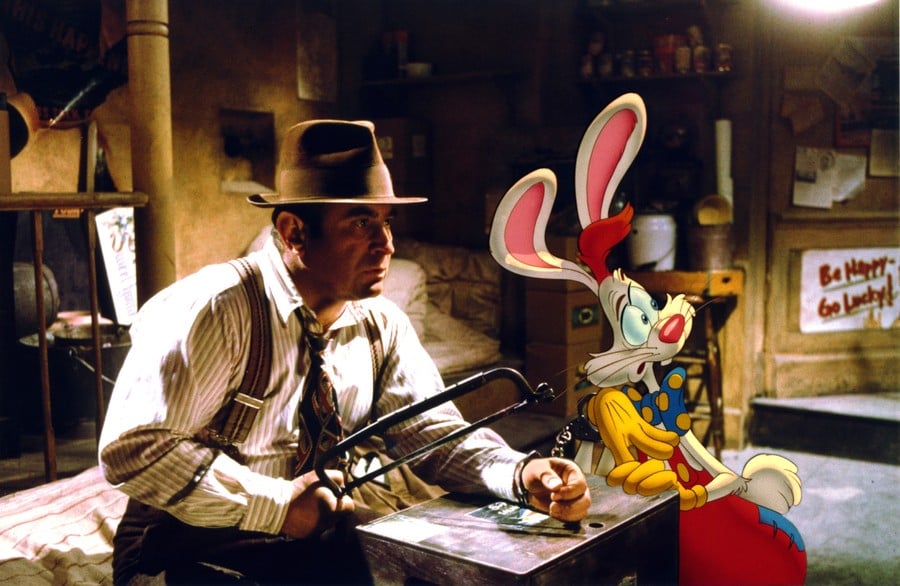
According to Miles, the initial idea was for Disney's Music division to only be responsible for the distribution, but soon it became apparent that nobody was really overseeing the development of the game, or its other aspects such as the packaging and manual design. So it fell to Miles and the team at Disney Records to step in and work with the game's developer Silent Software to make sure the project got over the finish line.
Over the space of 9 months, the team at Silent Software and Disney Records finished 5 versions of the game for different platforms (MS-DOS, Commodore Amiga, Atari ST, Apple II, and Commodore 64), with Miles stating in retrospect that the experience "almost killed us". Nevertheless, the game went on to sell over 100,000 copies, becoming a modest hit for the company. So it was decided that Disney should establish a new operational unit, as part of its consumer products division to distribute more of its own projects for computers and have a proper framework to oversee the development of titles based on its IP.
The Capcom Connection
On September 15th, 1988, Disney filed a document to incorporate Disney Computer Software (later shortened to Disney Software), with the Disney executive Steve McBeth focusing on its business strategy and licensing, while Miles took on the important role of searching for more producers to work on its video game output. Among those she ended up hiring during this period were Roger Hector (who would later go on to work as a project manager at Sega on Sonic the Hedgehog 3 & Sonic & Knuckles), and Noah Dudley (a future Disney Imagineer who produced several virtual-reality attractions for DisneyQuest).
"I remember going on a big search and finding Roger and deciding we're going to build this," Miles tells Time Extension. "So we were thinking, how do we structure this? Who are the right people? And we were very interested in the idea of having high production values as kids were growing up and watching TV and videos and stuff. But at the same time, we understood that the gameplay was the most important thing, and having fun games. So we hired a bunch of people, including some with TV backgrounds, and put them underneath game people. So that way the game came first, and it wasn't a situation where we were putting our intellectual properties in bad games."
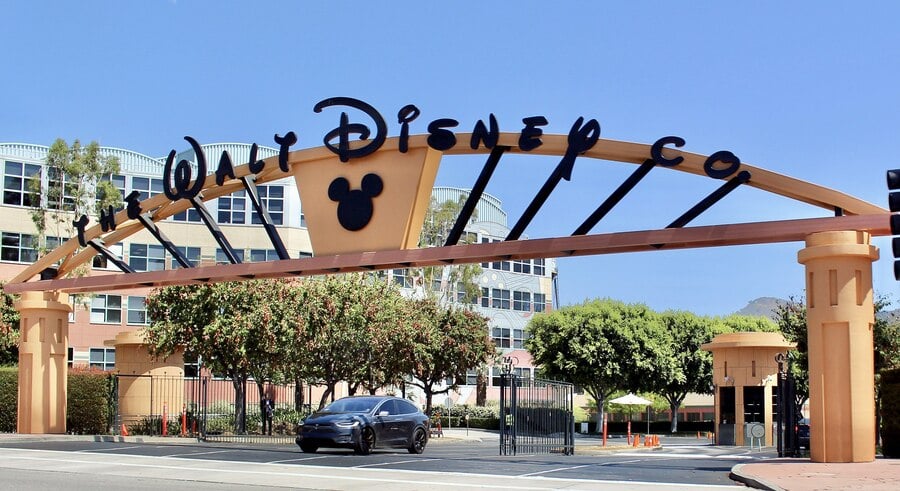
As Dudley recalls, "When Who Framed Roger Rabbit did well, the idea was, 'Let's do more of that.' And it was about this time that people started coming to us and saying, 'Well, if you need a software department, we have a software department', and 'You have IP, and we need IP'. There were a lot of games, for example, that were out there making some impressive money. So our group leader, Steve McBeth, said, 'Let's get some of that.' And he made deals with a bunch of different people."
After Roger Rabbit, Capcom USA was among the small group of companies that approached Disney, hoping to license its IP. Capcom USA, at the time, had only been established a few years earlier, in August 1985, after Capcom Japanese founder, Kenzo Tsujimoto, had propositioned the former Universal USA president George Nakayama, to build a US administrative arm of the Japanese video game developer. Capcom of Japan had already made a name for itself as a successful coin-op manufacturer and was getting ready to start making versions of its popular arcade game for the Nintendo Famicom. As a result, it saw a benefit in establishing a proper outpost overseas, to handle the distribution of both its arcade and consumer products. So Nakayama brought on board a bunch of staff including Joe Morici — an ex-Universal and Bally salesperson who was given the task of building out Capcom USA's consumer software division.
"The relationship started with Disney when I decided to go down to Disney to license children's games," says Morici. "I had two young daughters at the time and I thought they needed to play something besides fighting games. So I called up Shelley Miles, who was the VP at that point of Disney Software, and said 'We want to make games for Nintendo primarily.' So I flew down to Disney and signed an agreement and it progressed from there basically. We had Mickey Mousecapade, which was developed by Hudson Soft in Japan, but they didn't have the rights to the US. So I went to Hudson Soft and negotiated a deal with them that we'd take their code and tweak it a little bit. We brought it to the US and sold a couple million of them."
For Disney, Capcom ended up being a great strategic partner for the company. This is because, though Disney was quite content at the time to enter the PC market for itself, it was unwilling to risk getting involved in the console market, due to the higher costs and lower margins associated with producing cartridge games. Capcom, therefore, presented Disney with a way to have their IPs appear on consoles such as the Nintendo Famicom / Nintendo Entertainment System, but with a much lower chance of failure.
Miles states, "We were trying to balance investment and risk, and with the cartridge games, unless you were part of that set, it was very costly to get into and carried a lot of risk. Disney has always been a company that has done a lot of licensing and tried to pick the best people to work on things that could be the most successful and work in partnership, and Capcom was doing that. They had the Nintendo relationship and they were successful in the market. They understood Disney and cared about our cultural values and what we were trying to do. So we were really thrilled to work with them. And they did a great job."
The Magical Quest
Working with Capcom USA and Capcom's developers in Japan, Disney Software went on to oversee the creation of a bunch of new titles featuring popular Disney properties over the next few years, including most notably DuckTales (1989) and Chip 'n Dale Rescue Rangers (1990) for the NES. However, it's important to note that Capcom wasn't the only company that Disney was partnering up with, in its efforts to become a major player in video games.
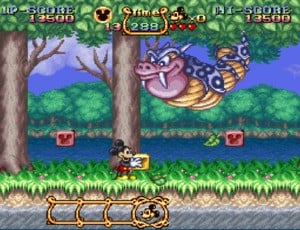
After the release of the Sega Mega Drive in 1988 in Japan, Disney Software had also cut a deal elsewhere with Sega of Japan to release games based on the characters Mickey Mouse and Donald Duck on the system, with the first of these, the platformer Castle of Illusion Starring Mickey Mouse, earning phenomenal reviews from publications like Computer & Video Games, Electronic Gaming Monthly, Mean Machines, Sega Power.
It quickly became apparent to Disney that it had hit upon a winning formula, so when Nintendo released its 16-bit console, the Super Nintendo, in 1991, it was a no-brainer that Disney would want to see its character represented on the platform. Luckily for them, Capcom already had a pitch in mind.
Capcom's idea for the game featured Mickey entering a magical world to rescue his pet dog Pluto who has been kidnapped by the evil Emperor Pete. Players would traverse various sidescrolling levels, accessible from a world map, including dense forests, lava-filled caves, and perilous cliffs, with each world containing a boss based on a representation of Pete or a large animal of some kind. By this point, Capcom, of course, had already established its credentials as a developer of platformers (having worked on games like Bionic Commando, Strider, Mega Man, Super Ghouls 'n' Ghosts, to name just a few) so Disney had faith that the team was skilled enough to make the concept work.

As Dudley recalls, "[At that point] nobody at Disney really understood what the hell we were doing. We only knew that you could make a lot of money on this thing. So Capcom came to us dripping with gold and said, 'We'll make a Mickey game for you', and we just said 'Yeah, that's great.'
For the most part, Dudley remembers the relationship with Capcom being pretty easygoing, with the producer having very few issues with what the studio was proposing. As a result, a lot of his work on the project was simply making sure that Mickey looked right. One of the unique twists of the game, for instance, was Mickey's ability to put on different costumes to unlock new skills to help him advance, so Dudley needed to make sure that the character didn't stray too far away from Disney's original design.
Speaking about the origin of this feature, Dudley remembers, "I don't know if we recognized it at the time, but we figured it out later that Mickey's a terrible character for a platformer. The problem was, in order to make a game out of it, you had to have Mickey doing things that Mickey really wasn't equipped for. So they equipped him. They gave him a firefighter's hat and then he could spray water and some other costumes. And this was fine with Disney. As long as it was still Disney Mickey with the ears, it's fine if he puts on a hat and becomes something else."
Besides the firefighter's hat, Capcom also included another two costumes in the game. These consisted of a magician's outfit that let Mickey cast magic and a mountaineering costume that allowed players to grapple onto objects. At least two of these appear to be references to old Mickey Mouse animated shorts, with the firefighter helmet being an allusion to the Mickey Mouse shorts The Fire Fighters (1930) and Mickey's Fire Brigade (1935), while the climbing outfit bears a resemblance to Mickey's outfit in Alpine Climbers (1936).
In one of the rare interviews we've come across with the game's "executive adviser" Tokuro Fujiwara where the famous developer references his work on The Magical Quest Starring Mickey Mouse, he seems to imply a link between these various abilities and his earlier design work on "wire action" games like Konami's Roc 'n Rope and Capcom's Bionic Commando. This is, of course, most obvious in the Mickey's climbing gear, which is a pretty direct analogue to Roc 'n Rope's harpoon gun and Bionic Commando's bionic arm, but could also apply to the other abilities too, as they all seem to serve the same basic function: to introduce variety and ensure that players don't abuse the easiest method of getting through a level.
The Big Release
The Magical Quest Starring Mickey Mouse was eventually released in 1992 in Japan and North America (with Europe having to wait another year until they could get their hands on it) and ended up receiving excellent reviews from gaming publications at the time.
Electronic Gaming Monthly's review crew, for instance, all gave the game a 9 out of 10, with the magazine's founder Steve Harris praising its "addictive" gameplay mechanics while calling the graphics "some of the most detailed graphics I've ever seen." The British games magazine Super Play, meanwhile, published an early review of an imported Japanese version, awarding it 89% out of 100 and labelling it "another classic from Capcom" and "far more original than expected".

Interestingly, a Sega Mega Drive / Genesis version was also briefly advertised in magazines at the time, but was cancelled for unspecified reasons. We asked Joe Morici if he had any special insight into this, but he stated that he couldn't remember the precise details, only that it might have had something to do with Capcom being reluctant to jump into the Sega Mega Drive / Genesis market at the time.
"I think part of the problem was we were outsourcing development at that point," Morici states. "That was part of the problem we ran into, and that even goes back to Street Fighter. Capcom was not willing to jump into that market. It took me a while to convince Japan to support Sega and they finally did. But, like I said, the development was done externally, which was not the way to go in my opinion."
Unsurprisingly, given the strength of the reviews and its famous lead, the sales of the Super Nintendo went on to shift a ton of units, with Dudley suggesting the game was particularly popular with Japanese audiences.
He recalls, "It did pretty well in the United States but it did very well in Japan. It's always been the case. Capcom does better in Japan, and Sega does better in the United States. But anyway, it went well enough so that they wanted to do another one and another one."
Following The Magical Quest Starring Mickey Mouse, a sequel, The Great Circus Mystery Starring Mickey & Minnie, was released on store shelves in 1994 in North America and Japan (with Europe again having to wait another year). The main draw of this sequel was the addition of a cooperative multiplayer mode, with players being able to team up with a friend and play as Mickey and Minnie. In contrast to the previous game, The Great Circus Mystery Starring Mickey & Minnie wasn't just released on Super Nintendo but also got a Sega Genesis / Mega Drive release across a couple of regions (not Europe though), with Capcom seemingly overcoming whatever issues it had experienced in the past.
Disney's hopes for the sequel were inevitably high, given the enthusiastic reaction to the first title, but reviews for the game were far more mixed than its predecessor.
Electronic Gaming Monthly's review crew gave it an average score of 7.4 out of 10, calling it "a little on the easy side" but "still a great caper", while, elsewhere, Superplay awarded it 73%, praising its graphics and gameplay but criticizing its lack of innovation. In the review, Super Play's Tony Mott wrote that the addition of two-person simultaneous multiplayer was "still not revolutionary" and expressed disappointment that "Capcom expect people to shell out for another £50-60 worth of new cart that amounts to the equivalent of an only slightly glorified data disk."
Speaking about the disappointing reaction to the sequel, Dudley tells us, "I think that Capcom boxed themselves in with the circus theme, which didn't leave them with a lot of directions for the player to take."
Perhaps because of these less-than-stellar reviews and the declining sales of the SNES in North America, the third installment in the series Disney's Magical Quest 3 Starring Mickey & Donald, which focused on Mickey & Donald rescuing Donald's nephews from Pete, only ended up being given a limited release on the Super Nintendo in Japan.
This led to a somewhat disappointing situation where most Western gamers had to wait until the three titles were reissued internationally on Game Boy Advance in the early 2000s before they could properly experience the final entry in the series for themselves.
Today, The Magical Quest Starring Mickey Mouse is rightly regarded as an SNES classic, occasionally turning up on lists of the best games released for the Super Nintendo and inspiring console war-style debates over which series is better: the Magical Quest or the Illusion games. Despite that, though, none of the games are currently available on the SNES virtual console on Nintendo Switch Online and all of them have yet to appear in a remastered collection, meaning the only way to play them is to track down the original carts.
Because of this, we'd love to see them get a new release on modern platforms in the future to give a new generation the chance to discover them, preferably with the addition of behind-the-scene materials and small quality-of-improvements (save states, etc). Maybe they could even do what we, unfortunately, were unable to, and bring back Tokuro Fujiwara and the other members of the Japanese development team to give a deeper insight into the game's design meetings.

